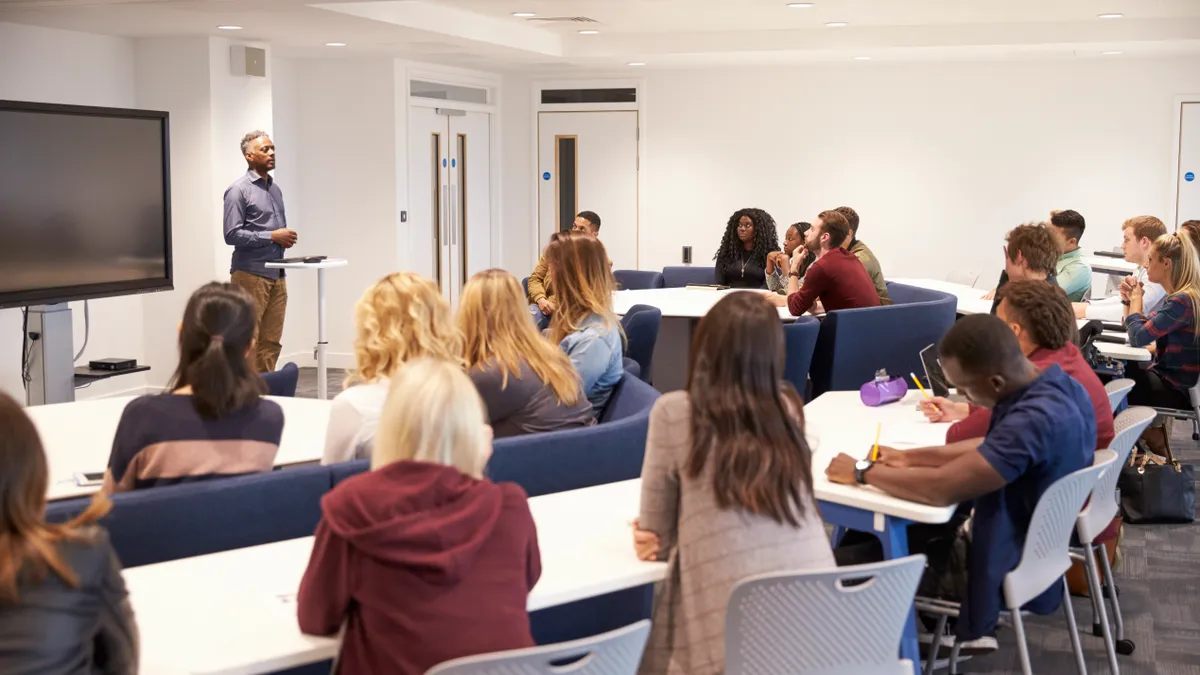As colleges and universities across the country resume normal operations this Fall, operational leaders are shifting their attention to the long-term needs of their campuses. Chief among them is a mounting deferred maintenance backlog.
Alongside the upfront investment requirements of campus modernization, keeping pace with facility and asset lifecycle costs (maintenance and operational costs) has been a challenge for higher ed institutions of all sizes. The result is a ballooning cost of deferred maintenance backlogs, which has been outpacing available capital budgets for more than a decade, increasing over 35% since 2007, according to a recent report from Gordian and APPA.
Deferred maintenance backlogs are tell-tale signs that traditional funding models are no longer effective in solving complex needs of today's campuses. To address these ballooning costs, new funding models, technologies and partnerships are emerging to help institutions achieve sustainable growth though capital projects that eliminate backlogs and meet long-term objectives.
While the backlog seems like a barrier to modernization, it can serve as a launching point for transformation.
Here are three fundamental steps to get meaningful capital projects back on track:
1. Assess your current state
Data is the best way to justify budget requests and prioritize investments for capital asset planning. The good news is that most facility teams have the lifecycle data they need. The challenge is that this data lives in many spreadsheets that must be manually updated and analyzed. Reporting can take hundreds of staff hours and doesn't always support a clear business case for modernization.
A digital asset management tool can streamline this process, providing a centralized view into facility and asset lifecycle data. It can also provide visibility on which assets need maintenance or are close to end-of-life, and quantify cost of inaction, helping to transform facility operations from reactive to proactive.
The necessary digital technologies are within reach, and when combined with the right expertise and more innovative funding models, can deliver strategic outcomes for both short-term and long-term needs.
2. Bridge operational gaps
While deferred maintenance is a leading concern, there are other operational gaps weighing on administrators as they think about the future of campus operations, according to a recent survey of 127 higher education leaders. Outdated tools and technologies, for example, was a concern cited by 69% of respondents in 2021 compared to just 49% the previous year. Workforce management (turnover, etc.) was another area of concern that has increased since the pandemic.
As part of assessing your current state, workforce bandwidth and capabilities should factor into capacity for growth and paint a clear picture of how scalable you are to meet future demands and disruption. By expanding partnerships, colleges and universities can tap into outside capital and operational expertise to achieve growth and budget stability in parallel. These new partnerships can also level the playing field for smaller campuses.
Engaging partners with expertise in infrastructure, energy management and funding channels frees up operations staff time and ensures outcomes are met.
3. Build capacity for growth
Administrators are feeling the lag between their current state and ideal future, as the pandemic has disrupted timelines, priorities and planned budget allocations. Although it's tempting to move down the pre-pandemic capital project list, this approach misses the opportunity to leverage infrastructure investments as part of a long-term strategic plan.
Investing the time upfront to align investments with business continuity needs is crucial to ensuring today's investments contribute to the educational goals of tomorrow. The resulting master plan should ensure forward-looking initiatives advance alongside projects that support day-to-day campus operations.
Questions to consider for reassessing your infrastructure program:
- How are you gaining a comprehensive view to manage current infrastructure and determine future capital asset requirements?
- What information is available to help you assess the financial, operational and technical components of your master plan?
- How will your investments scale to respond to changes in demand and availability of emerging technologies?
- Is there enough flexibility in your operational structure to continually optimize, manage and maintain your campus infrastructure?
Now is the time to recalibrate plans to advance long-term strategic priorities such as academic research and hybrid learning. In today's competitive landscape, institutions require more financial and operational flexibility to manage today's capital and operational requirements. The current disruptive time presents an opportunity to challenge the status quo.
Find more data insights in the research report, Higher Ed Survey Reveals New Formulas for Strategic Campus Modernization.






